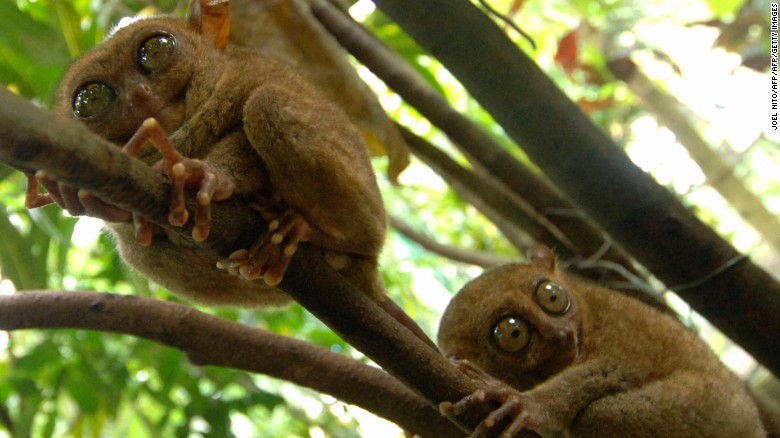With its teeny tiny body, bat-like ears and bug eyes, the Philippine tarsier might be the most peculiar primate on earth.
It's also the second-smallest, weighing just three to five ounces and measuring up to six inches long.
Just how tiny is that? About the size of an adult palm.
Native to the southeastern Philippines, the 45-million-year-old species faces a triple threat to its existence: low birth rates, exploitative tourism and habitat destruction from logging and mining.
According to the International Primate Protection League, there are between 5,000 and 10,000 Philippine tarsiers left in the wild and the number is plummeting.
In recent years, the Philippine tarsier was named a specially protected faunal species by the government and designated as "near threatened" by the IUCN Red List of Threatened Species.
"Part of the problem is these animals require a specific habitat," Joannie Mary Cabillo, of the Philippine Tarsier Foundation, tells CNN.
"They only live in forests with bushy vegetation, and lots of insects to eat. They don't have that many homes in the world."
In the town of Corella on Bohol Island, the Philippine Tarsier Foundation set up shop in 1996, aiming to provide a natural habitat for the animals and an opportunity to study their behavior.
The Foundation looks after roughly 100 of these animals across an 8.4-hectare forested sanctuary, with one open observational enclosure that allows tarsiers to come and go as they please.
"Since tarsiers are so rare, many people try to exploit them -- turning tarsiers into an attraction," explains Cabillo.
"Thousands of tourists come to Bohol to see these creatures every year. But they're often under stressful and unnatural conditions. They're being shown off during the day, when they should be sleeping."
If the animals are up all day, they can't hunt at night, which causes a destructive cycle.
"They'll be hungry and unhappy, and struggle to reproduce," says Cabillo.
"The less the human intervention for the tarsiers, the better."
http://www.bbc.co.uk/nature/life/Tarsier

Aucun commentaire:
Enregistrer un commentaire